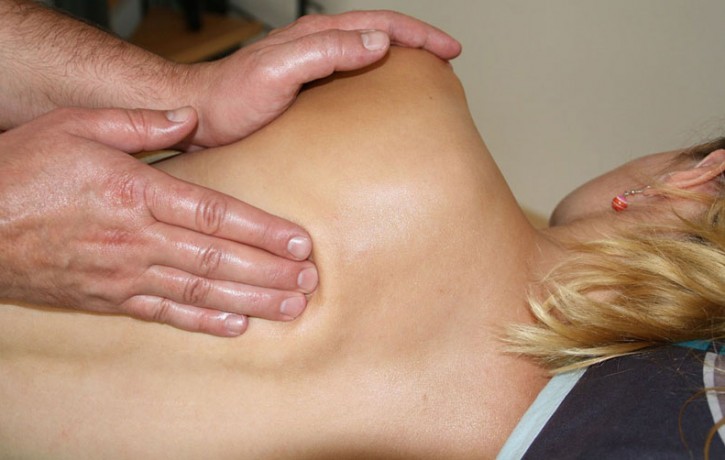in Osteopathy
What is the “Click” in Spinal Manipulation?

Modern manipulative therapies began life in the late 19th century in North America with the emergence of osteopathic medicine and chiropractic medicine. In the context of healthcare, joint manipulation is performed by several professional groups In Europe and the USA, most commonly by Osteopaths and Chiropractors (Chiropractors alone are estimated to perform over 90% of all manipulative treatments) but are also commonly used by other manual therapists including occupational therapists and physiotherapists. When applied to joints in the spine, it is referred to as spinal manipulation, High-velocity Thrust (HVT) Joint cavitation, Grade 5 mobilisation (under Mulligan classification).
Spinal manipulation is characteristically associated with the production of an audible ‘clicking’ or ‘popping’ sound. This sound is believed to be the result of a phenomenon known as cavitations which occur within the synovial fluid of the joint. When a manipulation is performed, the applied force separates the articular surfaces of a fully encapsulated synovial joint. The force applied to move the joint deforms the joint capsule and soft tissues surrounding the joint which creates a reduction in pressure within the joint space. Due to the pressure change, some of the gases that are dissolved in the synovial fluid (which are naturally found in all bodily fluids) leave solution creating a bubble or cavity, which rapidly collapses upon itself, resulting in a ‘clicking’ sound. The contents of this gas bubble are thought to be mainly carbon dioxide. The effects of this process will remain for a period of time termed the ‘refractory period’, which can range from a few minutes to more than an hour, while it is slowly reabsorbed back into the synovial fluid. There is some evidence that ligament laxity around the target joint is associated with an increased probability of cavitation.
The clinical effects of joint manipulation have been shown to include:
- Temporary relief of musculoskeletal pain
- Shortened time to recover from acuteback sprains (Rand)
- Temporary increase in passive range of motion (ROM).
- Physiological effects upon the central nervous system.
- No alteration of the position of the sacroiliac joint.
Common side effects of spinal manipulative therapy (SMT) are characterized as mild to moderate and may include: local discomfort, headache, tiredness, or radiating discomfort.
- Finding Hope and Comfort Through Pain - 21st March 2025
- Non-Pharmacological Solutions for Managing Pain in Parkinson’s - 19th February 2025
- The Healing Touch: How Massage Benefits People with Spinal Injury Pain - 28th January 2025
